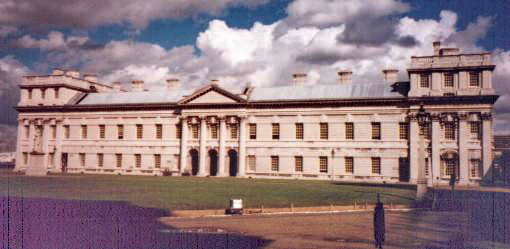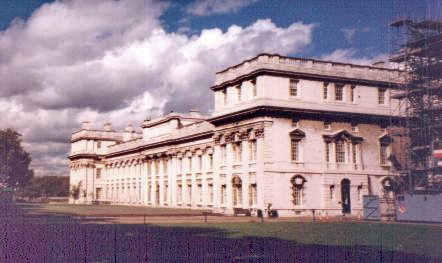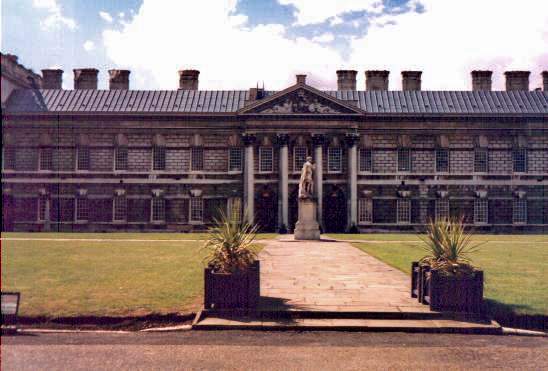Greenwich
The Old Royal Naval College - The Present Day

After long negotiations, it was decided that the University of Greenwich should take 150 year leases on Queen Anne Court, Queen Mary Court, and King William Court. The remaining building, King Charles Court, is let to Trinity College of Music. Needless to say, the buildings are a Scheduled Ancient Monument and Listed Grade I.
The Painted Hall and Chapel (see previous page) remain in the possession of the Greenwich Foundation for the Royal Naval College, and are open to the Public Monday to Saturday 10am to 5pm, Sunday 12.30pm to 5pm. Admission is free Monday-Sunday. The rest of the buildings are not as yet open to the public, although the University intend to open some areas in the future.
The University of Greenwich was founded in the 1890s as one of the first of the new Polytechnics. In 1994 the University opened negotiations for the purchase of the derelict Dreadnought Seamen's Hospital and nearby Devonport Nurses Home. When the Government announced that the Navy were to leave the area, they decided to bid for the rest of the buildings. As mentioned above, they were successful in gaining leases on three of the buildings. Queen Anne Court was the first of the buildings to be converted, and it received its first students in September 1999. Queen Mary Court was occupied in September 2000; King William Court in 2001.
The new campus, known as the 'Maritime Greenwich University Campus', presently comprises the Schools of Computing and Mathematical Science and Post Compulsory Education and Training, together with the new Greenwich Maritime Institute. The Vice Chancellor's office and other administrative accommodation are also within Queen Anne Court. In the Old Dreadnought Hospital is the Library and computer labs.
In re-ordering and refurbishing the Queen Anne building for use by the University, it has been possible to recover some sense of the nature of the building as it was when used for naval pensioners. Particularly, a number of ward spaces have been cleared of all sub-division and restored as single spaces or, at the most, sub-divided into two to form large classrooms, single spaces becoming break-out spaces for the classrooms. Previous sanitary accommodation was disposed irregularly around the building, often impinging unsympathetically on architectural features, and insufficient accommodation was provided for ladies and handicapped users. Thus the central loggias have been cleared and now provide vaulted lobbies, while sanitary accommodation has been rationalised into specific areas.
Wherever possible, original details have been restored or followed; where sub-division has had to occur, this has been discretely done, in some cases with minimum profile steel and glass screens maintaining the original spatial flow. Comparatively little has been changed in the north and south pavilions, apart from removing unsympathetic accretions, restoration work and re-decorations.
The recently opened Stephen Lawrence Gallery, situated within the university, stages exhibitions throughout the year, providing a showcase for the work contemporary artists and exploring multi-culturalism in the visual arts.


